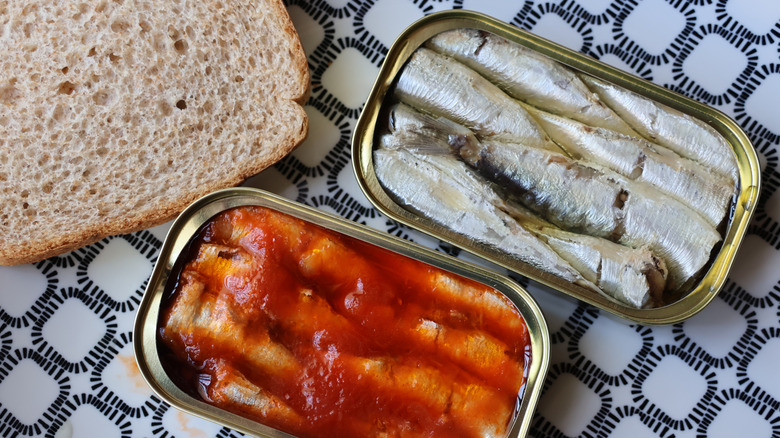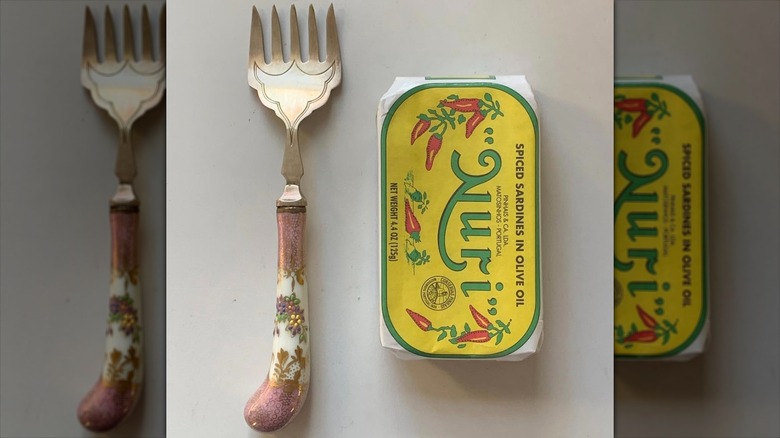What Is A Sardine Fork And Do You Actually Need One?
Sardines are having another moment in the sun, though one could argue that they never truly went out of style. While these days you might spot them as aesthetic inspiration for artwork, home decor, and even fashion, they have long been an affordable source of protein. Moreover, these canned fish actually taste better the longer you wait to eat them. For those who actually consume the sardines and don't just use the brightly colored tin for display in the kitchen, wrangling those slippery suckers out of their metal home can be a major struggle.
We spoke to Robert DiGregorio, director of seafood quality at Fulton Fish Market, who told us about a possible solution to this problem: the sardine fork. According to DiGregorio, "A sardine fork is used to neatly remove tinned fish from the can and put it on the plate." No more shredding the fragile fish before it makes it out of the packaging. (Here are some pointers on how to eat sardines, for the uninitiated.) DiGregorio also says, "I personally have never used a sardine fork [because] for me a regular fork works fine." However, he admits that the former option "does seem more elegant." It's also very different from the standard multi-pronged utensil. DiGregorio describes it as "a very wide fork with multiple tines." Though this type of cutlery may seem unnecessary now, it was all the rage about 150 years ago.
The pomp and fuss of sardine forks
Sardine forks don't look much like their regular three- or four-pronged counterparts. These tools were small, nearly the size of a sardine tin itself, and typically came with between five and seven prongs, though there were also versions with as few as three prongs. Sardines are notoriously flimsy (here's an essential tip for cooking canned sardines that stay intact), so the sardine fork was created to prevent breakage when bringing the fish to one's mouth. The flatness and with extra prongs enable it to cradle the sardine. These forks were most commonly made out of silver or sterling silver, but they were often made from wood and animal bone, too.
Humans have been using forks to eat for hundreds of years, but the sardine fork rose to fame during the Victorian era. That period of production lasted from around 1875 through the early 1900s. Due to when they were made, many vintage sardine forks you might spot at antique stores look fairly fancy. Intended for use in the dining room, they were embellished with swirls and whorls and flashy designs meant to impress guests. Some of the older, more ornamented sardine forks go for upwards of $100 on secondhand sites like eBay, but you'll find newer versions on Amazon, such as this four-pack of Celia Sardine Table Forks, for around $30.

